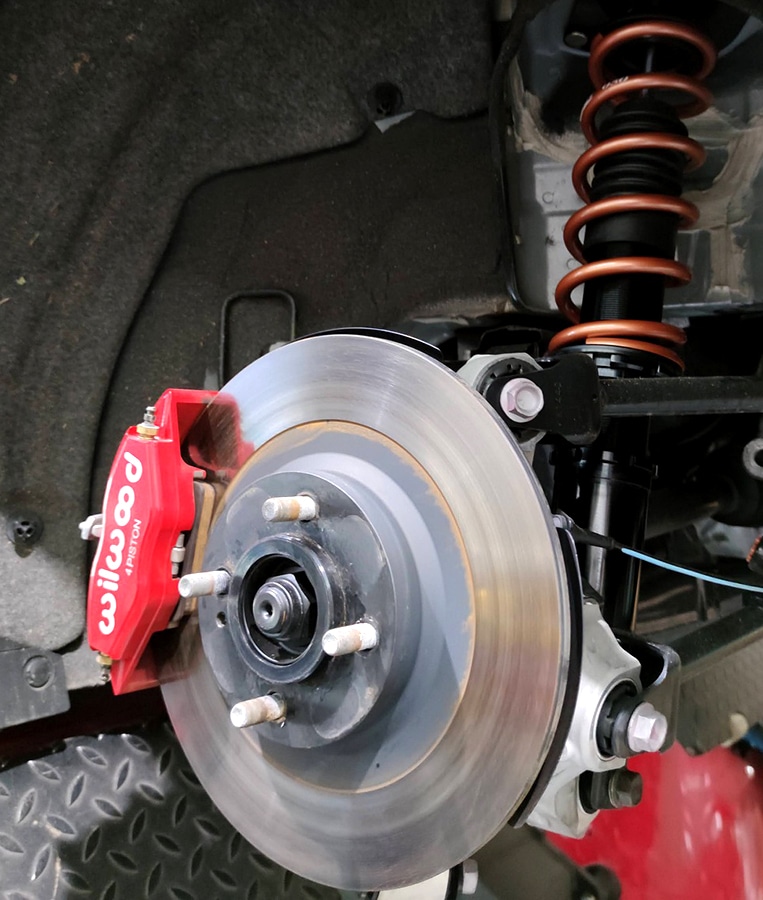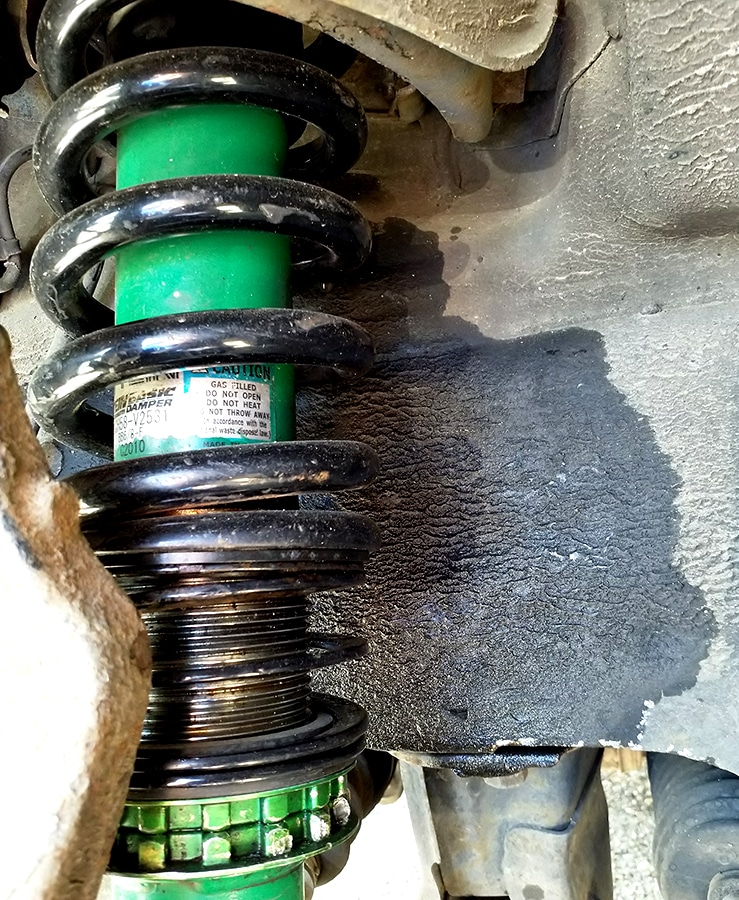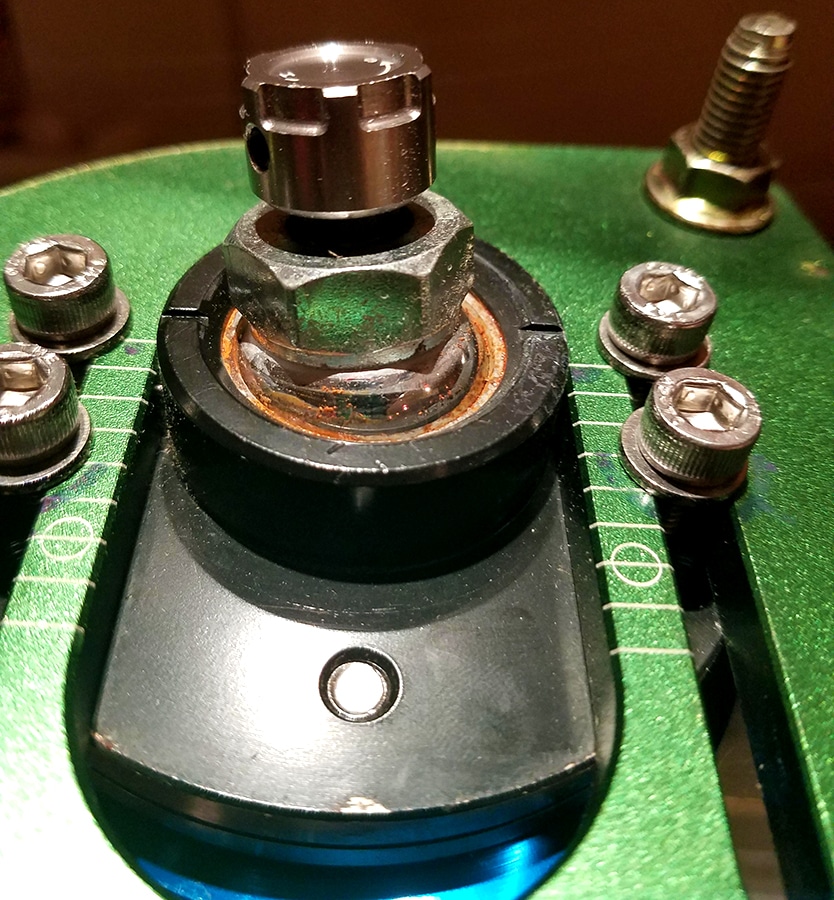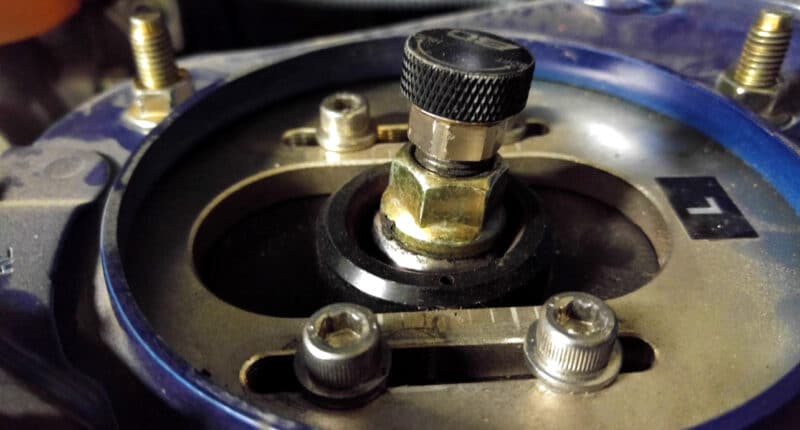Whether your coilovers are new or old, the last thing you want is to hear them clunk every time you hit a pothole or drive over a speedbump.
Many enthusiasts suggest that clunking is unavoidable and that it’s a common issue with both coilovers and struts. Which is true. But that doesn’t mean that it’s normal. If your coilovers are clunking, it’s cause for concern, and they need to be checked.
In this guide, we’ll tell you exactly how to remedy this, along with some tips on how to ensure that your coilovers are bolted securely and how to maintain them.
Identifying Clunking Coilovers
Before you try to fix this, you need to confirm that it is in fact your coilovers that are clunking. More importantly, you need to know when they’re doing that, and where exactly the noise is coming from.

Do you hear the clunk when driving over bumps, or does it happen when turning corners? Does the sound come from the driver’s side, or is it the rear suspension?
Identifying these things is essential for figuring out exactly what the problem is and how to fix it. Understanding what coilovers do and how they work will help you do just that.
But keep in mind that not every clunking sound comes from your coilovers. There are plenty of components in your suspension system that will make similar sounds.
If you have any worn-out bushings it can lead to metal-on-metal contact, which will create a clunking noise when you drive.
We strongly recommend double-checking all the bushings in your suspension system before diving in too far on the coilovers because it could very well be an easy fix. These include:
- Sway bar end link bushings,
- Control arm bushings,
- Strut mount bushings, and
- Trailing arm bushings.
Top 4 Reasons for Clunking Coilovers (and Fixes)
The most common reason why you might hear a clunking sound from a new set of coilovers is incorrect installation. Start by ensuring that the coilovers have been installed correctly according to the instruction manual, and only then continue troubleshooting.
If you’ve recently installed aftermarket suspension components such as sway bars or adjustable control arms, check for any rubbing or clearance issues. Ensure that the lower control arm bolts and sway bar end links are tightened to the right torque specifications.
If all that checks out and you’re convinced that the problem is with your coilovers, then it could be one of the reasons mentioned below.
Loose Top Hat Bolts

This is the most likely reason and luckily it’s also the easiest to fix. When you install your coilovers you must tighten the top hat bolt down to a specific torque spec. This is usually mentioned in the instruction manual.
There’s no “good-n-tight” here, and there’s no going off feel. It needs to be the exact right torque spec to get the results you want. But the problem is that even if you do it completely right, over time it starts to loosen up.
One of the first symptoms of this is the clunking sound, and it’s not something you want to ignore. Because if the nut starts to get loose and you ignore it, it will start to back out further which can lead to an accident.
All coilover manufacturers have their own torque specs, so double-check the installation guide to see what you should torque the top nut to.
The best part about this, and the reason why this should be the first thing to check is that you don’t have to remove your coilovers to do so. It’s literally a 5 minute job.
Lack of Maintenance

Coilover maintenance is extremely important. Just like changing your engine oil, you need to grease your coilovers to ensure they function properly at all times.
While I’d love to tell you that you can grease your coilovers while they’re on your vehicle, that’s just not how it works. You’ll need to fully uninstall the coilovers to grease them properly.
Don’t just use any grease though, use anti-seize as it helps prevent rust, and most importantly, helps to prevent clunking (and creaking). Apply it onto the threaded part of the shock body and rotate the adjustment coilovers to work it into the threads.
Apply plenty of white lithium grease between the top part of the spring where it makes contact with the upper spring seat, and do the same with the lower part of the spring and the adjustment collar.
Of course, finding out that you need to service your coilovers leads to the next question — how often do you need to service your coilovers?
It’s not a mileage or a usage requirement, it has everything to do with preventing rust buildup, which primarily comes from changing weather.
Because of this, we recommend servicing your coilovers before every winter. This will give them maximum protection when they need it most.
Excessive Bearing Play

So far, both issues we’ve addressed most likely occur when you hear the clunk when driving over bumps. However, if you’re noticing it when turning, there’s a good chance there’s a problem with the ball bearings.
While you can try to reach in to feel if there’s play in the ball bearings without any disassembly, you’ll won’t get an accurate assessment that way. You need to remove the coilovers to see if they sit perfectly snug with the pillow ball mounts.
Check for any play (vertical or horizontal movement). If there is some play you’ll need to replace the ball bearings — unless they’re sealed. Then you might have to replace the entire unit. Do check if it is still under warranty.
Out of Round Upper or Lower Bearing
Another issue that you can have if you hear clunking when turning is that the upper or lower bearing could be out of round or slightly out of their housing. Once again, the only way to check this is to uninstall the coilover from your vehicle.
Once you have the pressure off the coilover, it’s time to see if both the upper and lower bearing sit completely flush into the pillow ball mount. If they aren’t completely flush, you might be able to readjust them to get them a flush fit.
However, if there is some kind of structural damage to the upper or lower bearing, you might need to replace them, and if you can’t do that, it’s time to replace the coilover.
If the Clunk Still Persists
While we’d love to say that the four methods outlined above are a foolproof way to fix your coilover clunk problem, there is one final issue that needs to be considered, and it’s not one that you can fix.
Like all automotive components, coilovers wear out over time. One way this happens is that some of the internal components wear out and get damaged over time.
If that’s the case, your coilovers will clunk when you drive over bumps, and there’s really no way to check what’s going on without uninstalling the coilovers and disassembling them.
However, unless you have the proper equipment and expertise to do so, this is extremely dangerous, and we do not recommend it!

Be mindful that simply taking it apart won’t really help, because if something is broken, you’re going to need the replacement parts.
You could just send them back to the manufacturer instead, or figure out what parts need fixing and order the spares if you can get your hands on them.
Final Tweaks
While coilovers can be great aftermarket additions for your vehicle, they require a bit of work to keep up with and maintain. So, if yours are clunky, don’t ignore the issue.
With a little bit of elbow grease, you can fix the issue and make your suspension as smooth and quiet as ever.
Let us know how you manage to fix it. We’d love to hear from you in the comments below!


5 comments
I’ve recently installed a set of BC coilovers on my 2019 WRX and I am hearing little clunks from my front 2 coilovers. I have greased everything and made sure the top bolts are tightened but am still hearing it. When I’m driving over 50 mph the noises go away. I don’t know what is wrong!
Same on my BC coilovers for my Bolt EV. They sent replacement dampeners but the noise is the same. I’ve tried preload at 2, 4, 6, 8 and 12 mm and it makes no difference. I’ve uninstalled them and taken them apart multiple times but nothing works. It’s driving me insane! ????
Me too, on an E92 M3. I am beginning to think the BC’s just do this.
The noise on my coilovers seems to be temperature/warm up related. Of a morning it they can be noisy on rough roads/potholes/man hole covers. If I go on a drive this does improve a lot. Also it seems that when cold weather is here they are noisy but warm weather improves them dramatically. They have been checked by two professional garages and they say install is bob on, as is all the other suspension items. Any idea how to improve things? its a 2006 Bentley Continental GT
I had what sounded like a clunk from the driver side strut tower from inside the car while turning. With the wife turning the wheel and me poking around with a flashlight, I found that it was actually coming from the fender cover. The cover/protector slid down shortly after installation and was rubbing on the axle boot. Easy fix that I haven’t seen mentioned anywhere. Before you tear everything apart or go back to the shop, take a quick look at your clearance there.